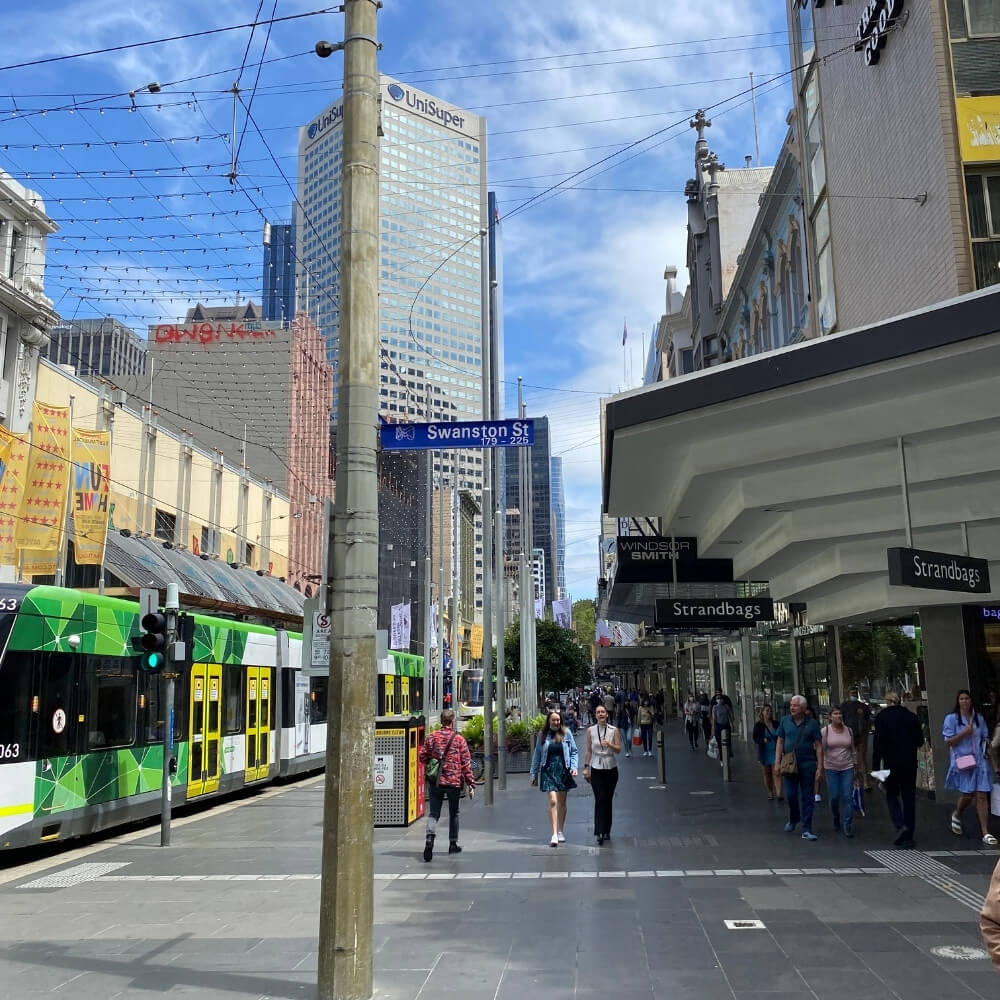Melbourne’s population is declining as a result of the departure of international students and city residents
Before the epidemic, Melbourne was one of the world’s fastest-growing advanced cities, according to Marcus Spiller, founder of SGS Economics & Planning. That trend, he predicted, would return with ease.
“Population growth signifies, at one level, that people have got confidence in the future of a city and its economy, and [are] willing to back that,” he explained. “People don’t flock to cities that don’t have a future.”
However, economist Saul Eslake believes that Australia’s and Victoria’s tough response to COVID-19 has harmed the country’s reputation and may deter people from moving to Melbourne, which was previously more reliant on local and international migration and was the pandemic’s worst-affected city.
Mr Eslake claimed that Victoria’s rapid population growth was masking a deteriorating economic situation.
“It’s become so dependent on population growth, when you take that out, Victoria actually has a problem.”
According to the ABS, the suburbs with the largest and fastest population declines in Australia last year were all in Greater Melbourne, where the population of the CBD fell by 5900 people, or 11%. 5700 city residents moved overseas, which accounted for the majority of the increase.
Suburbs near Melbourne’s largest universities saw the most population declines. Clayton, in the southeast, saw a population loss of 2700 people, or 9.4 percent. The population of inner-city Carlton, which has a large international student population, has fallen by 2600 people, or 10%.
Another 33,501 people moved to the suburbs or other capital cities from Melbourne. Victoria’s population increased by 1%, or 15,700 people, outside of the city of Melbourne.
It was the first time, according to ABS director of demography Beidar Cho, that regional Australia’s population grew faster than the capital cities.
Outer-suburban areas expanded as well. Cranbourne East, in Melbourne’s south-east, saw a population increase of 5000 people. Mount Cottrell, in the outer west, saw a 34 percent rise in population, while Yuroke, near Mickleham, saw a 28 percent increase.
International students made up 38% of the CBD’s population and 39% of Carlton’s residents before the epidemic, according to Lord Mayor Sally Capp.
“We know our closed borders meant many international students could not make it to Australia to begin their studies, or were forced to make the difficult decision between their education and their families at home,” Cr Capp said.
Since international borders opened in mid-December, according to Dr. Peter Hurley of the Mitchell Institute, around 27,000 foreign students have returned to Victoria. At its lowest point in December, the state had just 68,000 international student visa holders, compared to 180,000 prior to the epidemic.
Melbourne City Council has been offering stamp duty rebates on new residential properties worth less than $1 million that have been on the market for more than a year in an effort to entice residents back to the CBD. Before the federal and Victorian elections, Cr Capp indicated the council will continue to press state and federal administrations.
Mr Coates, who believes that initiatives to repopulate the CBD would be fruitless, believes that the future of remote work will determine growth in the areas.
“The shift appears somewhat permanent,” he added. “The world has changed.”
Kim Houghton, chief economist at the Regional Australia Institute, said regional growth has turned into a long-term trend.
“It helps to explain the rental shortages and house price increases in regional Victoria,” he added.
According to Dr. Houghton, company growth has increased as well, yet there are now 72,500 employment opportunities across regional Australia. “There’s a massive shortage of bodies on the ground.”
The Surf Coast Shire had the highest percentage rise in rural Victoria, with a year-on-year gain of 4.4 percent, totaling 1517 additional inhabitants.
The population of Geelong increased by 4725 people, or 1.8 percent. With 1,386 new people, the Bass Coast Shire expanded by 3.7%.
According to Peter Ghin, a research researcher at Melbourne University’s Future of Work Lab, the numbers show that the seaside is still attracting people.
He explained, “They confirm our exodus to the coastline.”
Dr Ghin, on the other hand, claimed that even little towns like Mansfield Shire, which saw a population gain of 268 persons last year, were affected by the trend.
“That makes a massive difference to a small community like that,” he explained. “That’s not a natural increase.”
According to a Victorian government official, growth would pick up this year and increase towards the middle of the decade, according to the state’s budget update.

